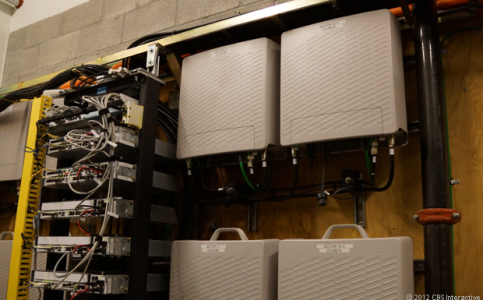Telecom Lead Europe: UK’s 4G auction has generated £2.34 billion against £22.5 billion from 3G.
Ofcom’s 4G / LTE auction has failed to meet £3.5 billion target.
Matthew Howett, telecoms regulation analyst, at Ovum, says Three’s ability to win 800MHz spectrum coupled with the spectrum at 1800MHz it acquired from EE before the auction puts it in a strong position to roll out its 4G network.
Many customers on Three will have had problems at one point with reception inherent of the propagation characteristics of the 2.1GHz spectrum it currently uses.
Other key highlights include the commitment BT has made to rolling out its own 4G services, and O2’s lack of higher value spectrum which is needed to meet growing data demands.

Ovum says everyone deserves at least some of the blame, from the regulator, through to the government and the operators themselves. However Ofcom should be praised for allowing EE to launch using its existing spectrum.
READ Mobile World Congress 2013 HERE
The Spiralling Costs of 4G
Lyn Cantor, president, Tektronix Communications, says Europe was a trailblazer of 3G mobile services more than a decade ago, but it has fallen behind other regions with the take-up of 4G.
However, being late to the party doesn’t necessarily put Europe on the back foot, in fact the European operators are in a position to take advantage of the knowledge and experience that operators in the U.S. and other global markets have acquired since launching their commercial LTE networks.
Though LTE is capable of delivering video calling, multi-player gaming and other applications, the increasing complexity of services have led to unprecedented usage patterns, which have created service management and customer experience issues for operators.
LTE is a wireless standard that supports high-speed mobile broadband and as consequence is a smartphone only technology. The costs associated with supporting smartphone customers are significantly higher than supporting customers using regular mobile phones – which support voice, messaging and rudimentary data services.
The European operators will be faced with spiralling customer care costs as LTE usage increases unless they are able to anticipate, and resolve, network issues before they impact on the subscriber.
Depending on the situation; 4G subscribers downloading videos from the iTunes store, or updating their Facebook accounts, by having a better understanding of the cross-domain user experience, operators are able to allocate network resources as appropriate to ensure a seamless connected experience for their customers.
As the operators migrate to an all-IP infrastructure they are under increasing pressure to monetise the data flowing across their networks. By guaranteeing connectivity and high levels of QoS and QoE the operators can satisfy their customers, generate new revenue streams and justify their investment in LTE.
4G in UK & Europe Leads to Diameter Signalling Spikes
Doug Suriano, CTO, Tekelec, says that UK and European LTE operators need a sophisticated signalling infrastructure to handle surge in Diameter messages.
The LTE Diameter Signalling Index predicts that LTE Diameter signalling traffic in EMEA will see a 320 percent CAGR from 2011 to 2016, making it the second fastest growing region in the world.
Always-on smart devices and advanced services will require Diameter signalling to set-up data sessions, authorise subscriber activity, authenticate subscribers and accurately charge for data usage.
The constant pinging and orchestration will require that UK operators either proactively manage Diameter traffic now using Diameter Signalling Routers (DSR) at the earliest stages of LTE, or invest in DSR solutions once the network builds out.
The LTE Diameter signalling increase will require more sophisticated roaming arrangements than at present, concurrent data sessions, video streaming, QoS guarantees and behavioural changes via social networking. All of these trends will create exponential increases in Diameter signalling volumes that operators must manage.
Waiting could increase the risk of outages and add costs when deploying in markets where smartphone uptake is increasing and the sophistication of services is on the rise.
Anand B
[email protected]





